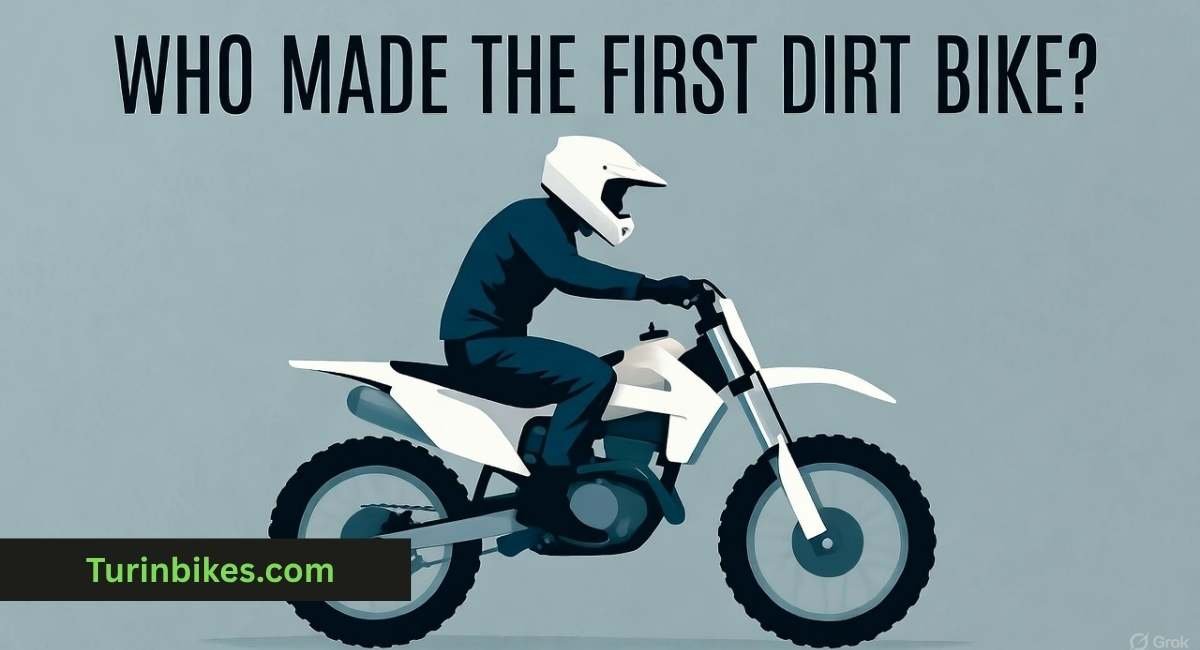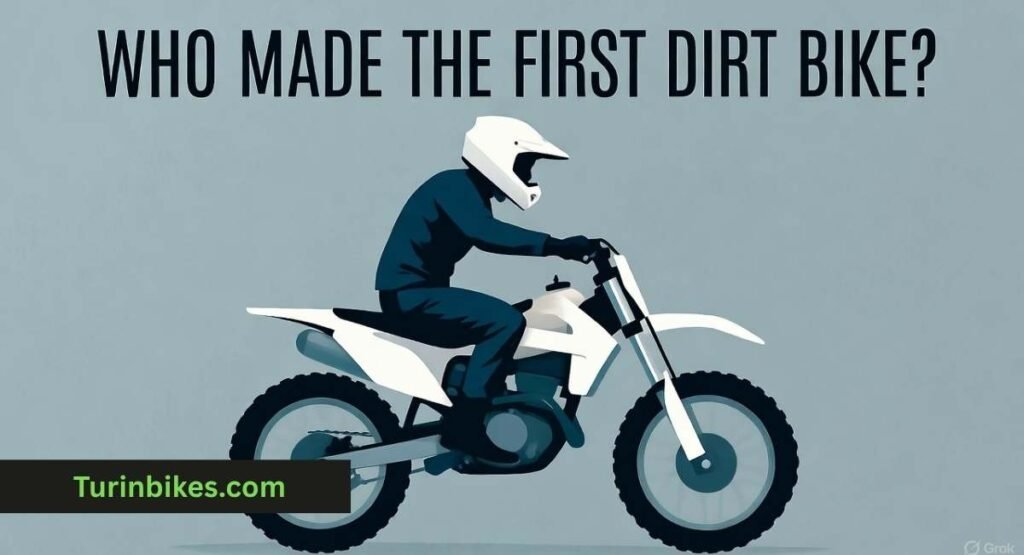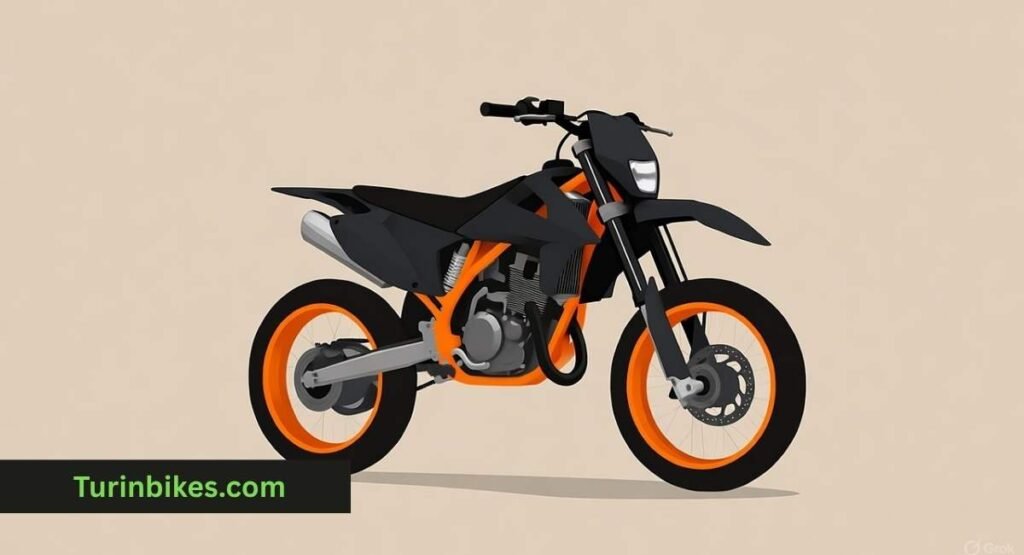
From muddy farm tracks to stadium supercross, dirt bikes have an off‑road legacy that blends innovation, competition, and culture. But who invented the first dirt bike in the world, when did it happen, and what was the first dirt bike brand? The truth is more nuanced than a single inventor or model. Dirt bikes evolved from modified street motorcycles tackling rough terrain into purpose-built machines optimized for dirt, jumps, and technical trails.
This complete history connects the early pioneers, the first races, engine breakthroughs, and the milestones that shaped the first dirt bike ever made—and the modern machines we ride today.

The Origins of the Dirt Bike
In the early 1900s, most roads were unpaved. That meant nearly every motorcycle was, by necessity, an “all‑terrain” vehicle. Riders and manufacturers quickly discovered that reliability, ground clearance, and ruggedness mattered as much as speed. This need birthed off‑road competition and, eventually, the dirt bike.
- Reliability trials began in the UK and Europe before World War I to test machines over rough countryside. The Scottish Six Days Trial (SSDT) dates to 1909, and the International Six Days Trial (ISDT, now ISDE) began in 1913.
- Riders modified street bikes with wider bars, lower gearing, higher exhausts, and reinforced frames. Soon manufacturers offered “competition” or “colonial” packages designed for rough terrain.
About Siegfried Bettmann and the “1914 BSA Scrambler”
- You’ll often see claims that Siegfried Bettmann (Triumph co‑founder) “invented the dirt bike,” or that BSA built a “1914 scrambler.” It’s more accurate to say Bettmann’s Triumph—and rival British brands—helped popularize off‑road competition. The term “scrambles” (the forerunner to motocross) wasn’t used widely until the 1920s, and factory “scrambler” models arrived decades later.
- BSA did build competition motorcycles before WWII, but the famous “scrambler” variants (like Gold Star scramblers) are post‑war (1950s–60s). So there isn’t a single 1914 BSA “first dirt bike” in the modern sense.
Definition evolved
- Early “dirt bikes” were simply robust road bikes modified for trials and scrambles.
- By mid‑century, purpose‑built off‑road frames, longer-travel suspension, and lighter engines drew a clearer line between street motorcycles and dedicated dirt machines.
Key Brands Behind Early Dirt Bikes
British innovators set the tone
- BSA, Triumph, AJS, Matchless, Royal Enfield, Rudge, and Norton built tough singles that excelled in trials and scrambles.
- Triumph’s post‑war success at the ISDT led to the TR5 Trophy (late 1940s), a landmark trials/scrambles model.
- BSA’s Gold Star and later B44 Victor scramblers became off‑road icons in the 1950s–60s, especially in desert racing and scrambles.
Scandinavian and European momentum
- Husqvarna (Sweden) was instrumental in making lighter, more agile off‑roaders. The 1955 Husqvarna Silverpilen (“Silver Arrow”)—a lithe 175cc two‑stroke—set the template for lightweight dirt bikes.
- CZ (Czechoslovakia) and Bultaco (Spain) developed potent two-strokes that dominated European motocross in the 1960s.
Japanese global breakthrough
- Yamaha DT‑1 (1968) is often called the first mass‑market Japanese dual‑sport/trail bike that brought off‑roading to the mainstream in the U.S.
- Honda’s 1972 XL250 Motorsport made four‑stroke trail riding accessible and reliable for the masses.
- Honda’s 1973 CR250M Elsinore (two-stroke) was a watershed production motocross bike—light, fast, and affordable—helping ignite the global motocross boom.
- Suzuki’s RM series and Yamaha’s YZ line in the 1970s cemented Japanese leadership in mass‑produced dirt bikes.
So, what was the first dirt bike brand?
- There isn’t a single “first.” If you define “dirt bike” as a purpose‑built off‑road machine, early credit goes to European brands (Husqvarna, CZ, Bultaco) and British competition models in the 1950s. If you mean the first mass‑market trail bike that popularized dirt riding worldwide, Yamaha’s DT‑1 is a strong candidate.

First 2‑Stroke and 4‑Stroke Dirt Bikes
Two‑strokes
- Two-stroke engines appeared early in motorcycling (DKW was a major two-stroke innovator in the 1920s–30s). But in dirt bikes, the 1950s–60s made two-strokes dominant: light, quick‑revving, and easy to tune.
- Brands like CZ, Bultaco, and Husqvarna powered champions in European motocross, showing the performance advantage of two-strokes off‑road.
- The Japanese refined and mass‑produced fast, reliable two‑strokes in the 1970s—Honda CR, Yamaha YZ, Suzuki RM, Kawasaki KX—fueling the sport’s popularity.
Four‑strokes
- Pre‑war and post‑war British dirt bikes were largely four-stroke singles—torquey and durable.
- By the 1970s–80s, two‑strokes ruled motocross, while four‑strokes lived mostly in trails and enduro (Honda XR, Yamaha TT).
- The modern four‑stroke revolution arrived with Yamaha’s YZ400F (1998): light enough and powerful enough to beat two‑strokes at the highest level. That bike (and its successors) shifted motocross toward four‑strokes across the 2000s. KTM, Honda (CRF), Suzuki, and Kawasaki followed suit with high‑tech DOHC four‑strokes.
Impact on performance and popularity
- Two‑strokes made motocross explosive, accessible, and relatively easy to maintain.
- Modern four‑strokes brought tractable power, broader torque, and emissions advantages, driving today’s racing and regulation landscape.
The First Dirt Bike Race and the Rise of Motocross
Early competition
- UK trials (Auto‑Cycle Union events) emerged in the 1900s; the SSDT (1909) and ISDT (1913) became the ultimate reliability/enduro tests.
- The first recorded “scramble” often cited: 1924 at Camberley, Surrey (UK). “Scrambles” quickly grew into a high-speed off‑road spectacle across fields and hills.
Motocross takes shape
- Post‑war Europe (1950s–60s) refined scrambles into motocross—closed circuits, mass starts, and airtime over bumps and jumps.
- FIM European Motocross Championship (early 1950s) led to the first FIM 500cc Motocross World Championship in 1957; the 250cc world championship followed in 1962.
Racing drove innovation
- Longer-travel suspension (twin shocks, then monoshock), lighter frames, better carburation and ignition, and knobby tire development all accelerated through competition.
- As motocross grew, so did consumer demand for lighter, faster, more durable production dirt bikes—feeding a virtuous cycle of innovation.
How Fast Was the First Dirt Bike?
It depends on what you call “first.” Early off‑road‑capable motorcycles (1910s–1920s) had modest power and heavy frames. On smooth roads, many could top 40–50 mph, but cross‑country off‑road speeds were much lower.
- A typical 1910s single might manage 30–45 mph on-road; in rough terrain, sustained speeds would be closer to 15–30 mph.
- By the 1950s–60s, dedicated scramblers and lightweight two‑strokes could easily exceed 60 mph, with race‑pace limited by course layout and suspension.
- A 1968 Yamaha DT‑1 (trail) could see roughly 65–70 mph on-road gearing; modern 250–450cc motocross bikes can exceed 70–85 mph, though gearing and track type usually cap real‑world top speed.
Evolution and Popularity of Dirt Bikes Worldwide
United States boom
- Dirt biking surged in the U.S. from the late 1950s onward, exploding after the DT‑1 and, later, the film “On Any Sunday” (1971) showcased the sport’s fun and community.
- Desert racing, enduro, and motocross became mainstream, with the Japanese making affordable, reliable bikes for every skill level.
Global leaders today
- KTM, Husqvarna, Honda, Yamaha, Kawasaki, Suzuki, GasGas, and Beta lead modern motocross, enduro, and trail markets.
- Technology now includes aluminum or chromoly frames, sophisticated suspension, electronic fuel injection, traction/launch control in some race bikes, and increasingly, electric options.
Who Made the First Electric Dirt Bike?
Electric dirt bikes emerged in stages:
- OSET (2004) built some of the first popular electric trials bikes for kids—hugely influential in youth off‑road riding.
- Zero Motorcycles began as Electricross (mid‑2000s), releasing early electric off‑roaders like the Zero X (around 2008) and MX models in the early 2010s.
- KTM’s Freeride E (concepts in 2012; production mid‑2010s) was the first from a major off‑road brand.
- Alta Motors (2016–2018) produced the Redshift MX/MXR—arguably the first high‑performance, pro‑capable electric motocross bikes—before ceasing operations.
- Today, Stark VARG and others are pushing electric performance to new heights.
So, who made the first electric dirt bike?
- For kids’ trials: OSET (early pioneer).
- For mainstream electric off‑road: Zero (early production adult e‑off‑roaders).
- For high‑performance motocross: Alta (first to seriously challenge gas bikes in pro settings), followed by KTM and Stark.
Fun Dirt Bike Facts and Tech Milestones
- 1909: Scottish Six Days Trial begins (enduro roots).
- 1913: International Six Days Trial (ISDT) debuts.
- 1924: First recorded “scramble” at Camberley, UK.
- 1955: Husqvarna Silverpilen popularizes lightweight two‑strokes for off‑road use.
- 1968: Yamaha DT‑1 kickstarts the dual‑sport/trail revolution in America.
- 1973: Honda CR250M Elsinore sets a new standard for production motocross.
- Mid‑1970s: Long‑travel suspension transforms motocross; Yamaha’s Monoshock leads the single‑shock era.
- Early 1980s: Disc brakes arrive in MX; engine reed valves and power‑valve systems spread (e.g., Yamaha YPVS).
- 1997: Honda CR250R debuts the first production aluminum MX frame.
- 1998: Yamaha YZ400F ushers in the modern 4‑stroke motocross era.
- Late 2000s: EFI becomes common on four‑strokes (e.g., 2009 CRF450R), improving response and altitude compensation.
- Mid‑2010s onward: Electric dirt bikes move from niche to competitive.
Quick Timeline of “Firsts” and Defining Moments
| Year | Event or Model | Why It Matters |
|---|---|---|
| 1909 | Scottish Six Days Trial | Establishes off‑road reliability/enduro tradition |
| 1913 | International Six Days Trial | Globalizes off‑road motorcycle competition |
| 1924 | First UK “scramble” (Camberley) | Birth of scrambles → motocross |
| 1955 | Husqvarna Silverpilen | Early blueprint for lightweight dirt bikes |
| 1950s–60s | BSA/Triumph scramblers; CZ, Bultaco | Competition‑ready off‑roaders; two‑stroke ascendancy |
| 1968 | Yamaha DT‑1 | First mass‑market Japanese trail bike |
| 1972 | Honda XL250 Motorsport | Popular four‑stroke trail bike for the masses |
| 1973 | Honda CR250M Elsinore | Landmark production motocrosser |
| 1974 | Yamaha YZ Monoshock | Long‑travel, single‑shock era begins |
| 1997 | Honda CR250R alum. frame | Chassis revolution |
| 1998 | Yamaha YZ400F | Modern four‑stroke MX revolution |
| 2004+ | OSET youth e‑trials | Electric dirt bikes gain traction |
| 2014 | KTM Freeride E (production) | Major OEM electric off‑road |
| 2016–18 | Alta Redshift MX/MXR | First truly competitive e‑MX |
Conclusion
So, who invented the first dirt bike? The honest answer is that dirt bikes weren’t invented in a single moment by a single person or brand—they emerged as riders and manufacturers adapted motorcycles to the challenges of rough ground, then purpose‑built them for trials, scrambles, and motocross. British competition bikes, Husqvarna’s lightweight two‑strokes, and later Japanese mass production all played pivotal roles. Honda’s XL250 and CR250M, Yamaha’s DT‑1 and YZ line, Suzuki’s RM, and KTM’s relentless off‑road focus shaped modern dirt biking.
The history of dirt bikes mirrors broader motorcycling and sports trends: from reliability to performance, from grassroots events to global championships, and now from gasoline to electric power. If this story intrigues you, check out local vintage bike collections, visit museums like the Barber Motorsports Museum (USA) or the Sammy Miller Motorcycle Museum (UK), or catch a modern motocross or enduro race—where yesterday’s innovations are still propelling tomorrow’s dirt bikes.
Meet Sachin Kumar, an avid cyclist and bike enthusiast with a passion for two-wheeled adventures. At our Turinbikes site, Sachin shares expert insights, thrilling ride experiences, and tips for fellow bike lovers.






